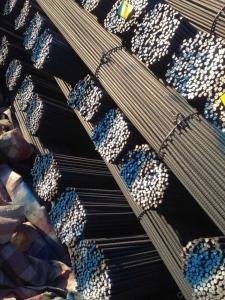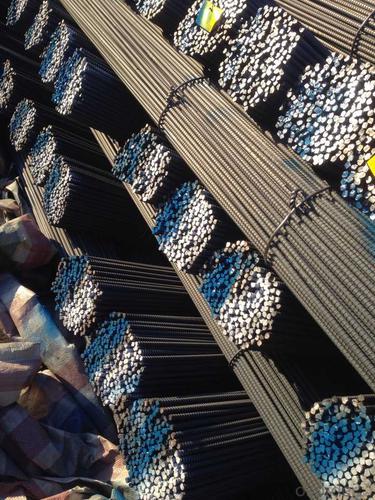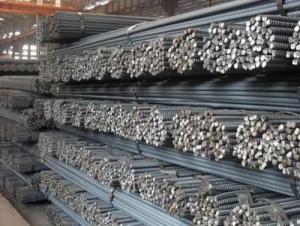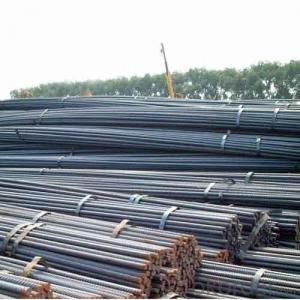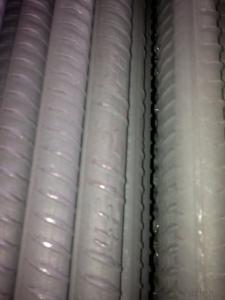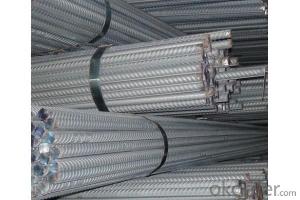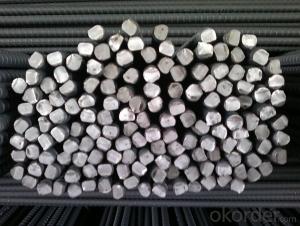Steel Rebars GB Standard with Variety Sizes
- Loading Port:
- China main port
- Payment Terms:
- TT OR LC
- Min Order Qty:
- 100 m.t.
- Supply Capability:
- 10000 m.t./month
OKorder Service Pledge
OKorder Financial Service
You Might Also Like
Product Description:
OKorder is offering Steel Rebars GB Standard with Variety Sizes at great prices with worldwide shipping. Our supplier is a world-class manufacturer of steel, with our products utilized the world over. OKorder annually supplies products to African, South American and Asian markets. We provide quotations within 24 hours of receiving an inquiry and guarantee competitive prices.
Product Applications:
Steel Rebars GB Standard with Variety Sizes are ideal for structural applications and are widely used in the construction of buildings and bridges, and the manufacturing, petrochemical, and transportation industries.
Product Advantages:
OKorder's Steel Rebars GB Standard with Variety Sizes are durable, strong, and wide variety of sizes.
Main Product Features:
· Premium quality
· Prompt delivery & seaworthy packing (30 days after receiving deposit)
· Can be recycled and reused
· Mill test certification
· Professional Service
· Competitive pricing
Product Specifications:
Manufacture: Hot rolled
Grade: HRB335,HRB400,HRB500
Certificates: ISO, SGS, BV, CIQ
Length: 6m – 12m, as per customer request
Packaging: Export packing, nude packing, bundled
| DEFORMED BAR | |
| SIZE d(mm) | theoretical kg/m |
| 6 | 0.222 |
| 8 | 0.395 |
| 10 | 0.617 |
| 12 | 0.888 |
| 14 | 1.21 |
| 16 | 1.58 |
| 18 | 2 |
| 20 | 2.47 |
| 22 | 2.98 |
| 25 | 3.85 |
| 28 | 4.83 |
| 32 | 6.31 |
FAQ:
Q1: Why buy Materials & Equipment from OKorder.com?
A1: All products offered byOKorder.com are carefully selected from China's most reliable manufacturing enterprises. Through its ISO certifications, OKorder.com adheres to the highest standards and a commitment to supply chain safety and customer satisfaction.
Q2: How many tons of steel products could be loaded in containers?
A2: Usually the steel products are delivered by bulk vessel because of the large quantity and the freight. However, there are no bulk vessel enter some seaports so that we have to deliver the cargo by containers. The 6m steel product can be loaded in 20FT container, but the quantity is changed according to the size, usually from 18tons to 25tons.
Q3: How many tons of steel products could be loaded in containers?
A3: Usually the steel products are delivered by bulk vessel because of the large quantity and the freight. However, there are no bulk vessel enter some seaports so that we have to deliver the cargo by containers. The 6m steel product can be loaded in 20FT container, but the quantity is changed according to the size, usually from 18tons to 25tons.
Images:
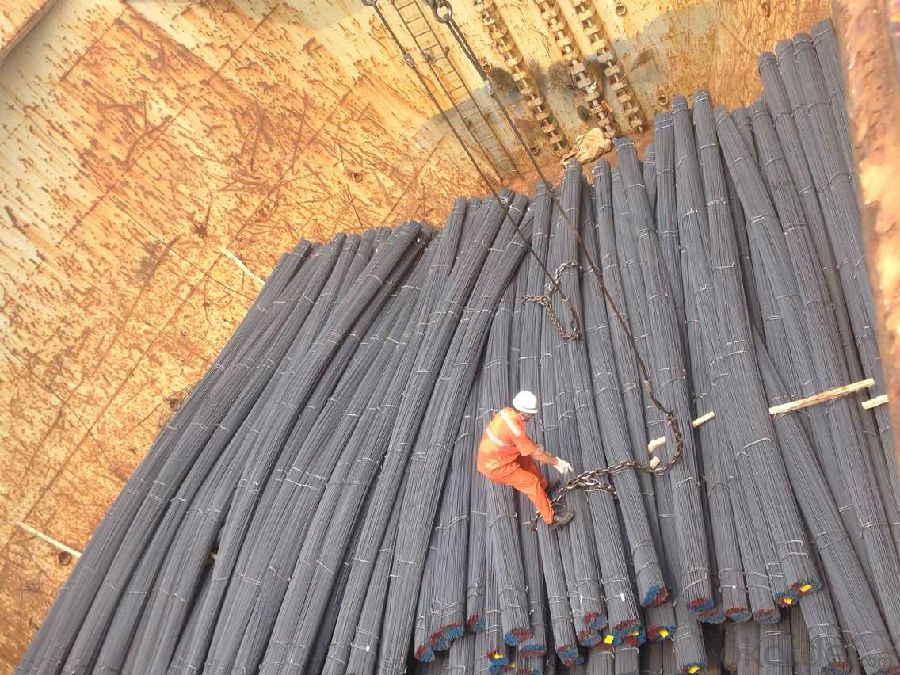
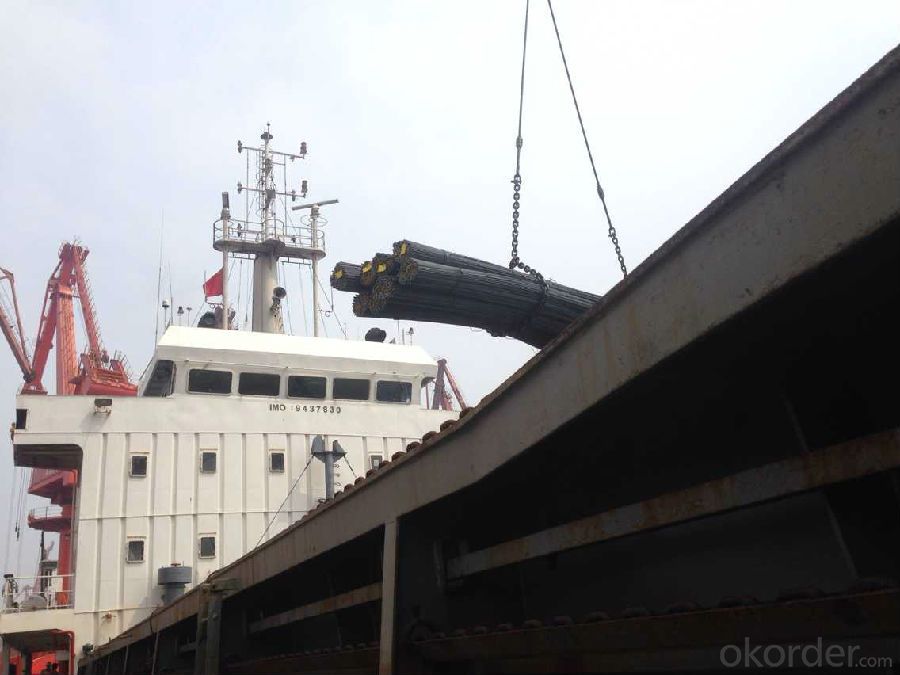
- Q: How are steel rebars used in parking structures?
- Steel rebars are used in parking structures as a reinforcement material within the concrete to provide strength and stability. They are typically placed within the concrete beams, columns, and slabs to enhance the structural integrity of the parking structure, ensuring it can withstand heavy loads and resist any potential cracking or collapsing.
- Q: Can steel rebars be used in the construction of offshore oil platforms?
- Yes, steel rebars can be used in the construction of offshore oil platforms. Steel rebars are commonly used in construction to reinforce concrete structures and provide additional strength and durability. In the case of offshore oil platforms, steel rebars are used to reinforce the concrete foundations and structures of the platform, helping to withstand the harsh environmental conditions and the weight of the equipment and infrastructure on the platform. The steel rebars are designed to resist corrosion and are typically coated with epoxy or other protective coatings to prevent rusting in the corrosive marine environment. Additionally, steel rebars can be custom-designed to meet the specific requirements of the offshore oil platform, ensuring they provide the necessary strength and stability.
- Q: What is the effect of improper storage on the corrosion resistance of steel rebars?
- Improper storage of steel rebars can significantly reduce their corrosion resistance. When exposed to moisture, humidity, or extreme environmental conditions, steel rebars can develop rust and corrosion. This compromises their structural integrity and durability, making them more susceptible to failure and compromising the overall strength of the reinforced concrete structure. Therefore, proper storage conditions, such as keeping rebars dry, protected from moisture and contaminants, and stored off the ground, are crucial to maintaining their corrosion resistance and ensuring their long-term performance.
- Q: Are steel rebars prone to bending or warping?
- Under normal conditions, steel rebars do not typically bend or warp. Their purpose in construction projects is to reinforce concrete structures, as they possess high tensile strength. These rebars are crafted from durable materials like carbon steel, enabling them to bear heavy loads without deforming. Nevertheless, it is crucial to acknowledge that external factors, such as excessive heat or improper handling during transportation and storage, can potentially cause rebars to bend or warp. Exposure to high temperatures compromises the structural integrity of steel rebars, rendering them more susceptible to deformation. Similarly, mishandling or inadequate storage practices, like uneven stacking or placing heavy objects on top, can result in deformation. To guarantee the structural integrity of steel rebars, it is vital to adhere to proper handling and storage guidelines, while also ensuring they are utilized within specified load limits. Moreover, considering the environmental conditions in which the rebars will be employed is essential for minimizing the risk of bending or warping.
- Q: How do steel rebars affect the overall vibration resistance of a structure?
- The overall vibration resistance of a structure can be significantly enhanced by the use of steel rebars. These reinforcement bars, also known as rebars, are typically made of high-strength steel and are commonly utilized in reinforced concrete structures. Rebars play a crucial role in providing tensile strength to the concrete, which is inherently weak in tension. By embedding the rebars within the concrete, they effectively counteract the potential tensile forces resulting from applied loads or vibrations. Steel rebars assist in distributing stress and strain throughout the structure, thereby preventing localized failure points and increasing the overall structural integrity. Furthermore, rebars act as a damping mechanism in the case of vibrations, absorbing and dissipating vibrational energy. This damping effect reduces both the amplitude and frequency of vibrations, thereby enhancing the structure's resistance to damage caused by vibrations. Additionally, the presence of rebars enhances the dynamic properties of the structure, including its natural frequency and mode shapes. This is particularly crucial in structures such as bridges, tall buildings, or industrial facilities, where external factors like wind, seismic events, or machinery operations can induce vibrations. To summarize, steel rebars enhance the overall vibration resistance of a structure by providing additional strength, distributing stress, and acting as a damping mechanism. Their presence improves structural integrity, reduces the risk of failure, and ensures the safety and longevity of the construction.
- Q: How are steel rebars inspected for quality on construction sites?
- In construction projects, steel rebars play a critical role by providing reinforcement and strength to concrete structures. It is crucial to ensure the quality of steel rebars in order to guarantee the safety and durability of the overall construction. To inspect the quality of steel rebars on construction sites, various methods are commonly used. The first and most basic method of quality inspection is visual examination. This involves visually inspecting the rebars for any visible defects such as cracks, deformations, rust, or surface irregularities. Any rebars with such flaws are immediately identified and rejected. Another method involves measuring and checking the dimensions of the rebars. Inspection personnel use measuring tools like calipers or tape measures to verify the length, diameter, and other dimensions of the rebars. Any deviation from the specified tolerances may result in rejection. Magnetic Particle Testing (MPT) is a non-destructive testing method that is commonly employed to detect surface and near-surface defects in steel rebars. In this technique, the rebar is magnetized and ferromagnetic particles are applied, which accumulate at any surface defects or cracks. Trained inspectors carefully examine the surface to identify any areas of concern. Ultrasonic Testing (UT) is another non-destructive testing method used for inspecting rebars. It involves transmitting ultrasonic waves through the rebar. These waves reflect back differently when they encounter defects like voids, cracks, or inclusions. Trained technicians analyze the reflected waves to identify and assess the quality of the rebars. Tensile Testing is carried out to determine the tensile strength of the rebars, which is crucial in assessing their quality. A sample rebar is pulled until it breaks, and the force required to do so is measured. This test helps determine the strength and ductility of the rebar, ensuring it meets the required standards. Chemical analysis is often conducted on steel rebars to ensure they meet the specified composition requirements. Samples are collected from the rebars, and various tests are performed to determine the chemical composition, including carbon, manganese, and other alloying elements. This analysis helps ensure that the rebars possess the necessary properties for the intended application. These inspection methods are typically carried out by qualified and experienced personnel, such as certified welding inspectors or quality control technicians. By implementing these quality inspection procedures, construction sites can ensure that the steel rebars used in their projects meet the required standards, thereby ensuring the safety and longevity of the structures being constructed.
- Q: What is the effect of steel rebars on the thermal conductivity of concrete?
- The thermal conductivity of concrete is greatly affected by the presence of steel rebars. Steel, being an excellent conductor of heat, allows thermal energy to easily pass through its structure. When steel rebars are embedded in concrete, they create a pathway for heat to flow within the material. The thermal conductivity of steel rebars can have both positive and negative consequences on the overall thermal performance of concrete structures. On one hand, it can improve heat transfer within the structure, enabling more efficient heating or cooling. This is advantageous in scenarios where thermal conductivity is desired, such as in building designs that require active temperature control. However, the presence of steel rebars can also result in increased heat loss or gain based on the environmental conditions. When there is a temperature difference between the inside and outside of the structure, the steel rebars can act as thermal bridges, making it easier for heat to escape or enter the building. As a consequence, higher energy consumption is needed for heating or cooling purposes. To address these potential issues, additional insulation measures can be implemented to decrease the thermal bridging effect caused by steel rebars. This may involve using thermal break materials or coatings, or adopting insulation techniques like adding foam or other insulating materials around the rebars. In conclusion, steel rebars significantly influence the thermal conductivity of concrete. While they can enhance heat transfer within the structure, they can also lead to increased heat loss or gain. Appropriate insulation measures should be taken into account to minimize the negative effects of thermal bridging caused by steel rebars.
- Q: Can steel rebars be used in tunneling and mining operations?
- Yes, steel rebars can be used in tunneling and mining operations. Steel rebars provide structural reinforcement and support to the tunnels and mining structures, ensuring their stability and strength. They are commonly used to reinforce concrete structures in these operations due to their high tensile strength and durability.
- Q: What is the effect of steel rebars on the seismic performance of a structure?
- Steel rebars, also referred to as reinforcing bars, play a crucial role in enhancing the seismic performance of structures by improving their overall strength and ductility. When structures are subjected to seismic forces, they undergo intense shaking and vibrations. The inclusion of steel rebars significantly enhances the strength and ductility of the structure, enabling it to withstand and absorb the energy released during an earthquake. The primary effect of steel rebars is their capacity to augment the tensile strength of concrete. Concrete is strong when compressed but weak when subjected to tension. By embedding steel rebars within the concrete, the composite material becomes capable of resisting tensile forces that may occur during an earthquake. This prevents the concrete from cracking or fracturing, ensuring the structure remains intact and functional. Furthermore, steel rebars act as a reinforcement mechanism by distributing the seismic load uniformly across the entire structure. During an earthquake, the shaking motion is dispersed throughout the building, minimizing stress concentration in specific areas. This redistribution of forces helps to maintain the overall stability of the structure, preventing localized failure and collapse. In addition, the presence of steel rebars enhances the ductility of the structure. Ductility refers to the material's ability to deform under stress without breaking. When seismic forces act on a building, the steel rebars provide flexibility and allow for controlled deformation. This plastic behavior aids in dissipating the energy generated during an earthquake, reducing the impact on the structure and minimizing potential damage. Moreover, steel rebars also contribute to the overall stiffness of the structure. By reinforcing concrete components such as columns, beams, and walls, the rigidity of the entire system is increased. This stiffness helps to limit displacement and deformation of the structure, mitigating the risk of structural failure and ensuring the safety of occupants during a seismic event. To summarize, the presence of steel rebars in a structure significantly improves its seismic performance by enhancing concrete's tensile strength, distributing seismic load, improving ductility, and increasing overall stiffness. These effects collectively enhance the structure's ability to resist and withstand the forces generated during an earthquake, ensuring the integrity of the structure and the safety of its occupants.
- Q: What are the different methods of cutting and bending steel rebars on-site?
- There are several methods of cutting and bending steel rebars on-site. The most common method for cutting rebars is using a handheld rebar cutter, which is a portable tool specifically designed for this purpose. Additionally, oxy-fuel cutting using a torch can also be used for cutting thicker rebars. As for bending, a manual rebar bender or a hydraulic rebar bender can be employed, depending on the thickness and complexity of the bends required. These methods allow for precise and efficient cutting and bending of steel rebars on-site.
Send your message to us
Steel Rebars GB Standard with Variety Sizes
- Loading Port:
- China main port
- Payment Terms:
- TT OR LC
- Min Order Qty:
- 100 m.t.
- Supply Capability:
- 10000 m.t./month
OKorder Service Pledge
OKorder Financial Service
Similar products
Hot products
Hot Searches
Related keywords
